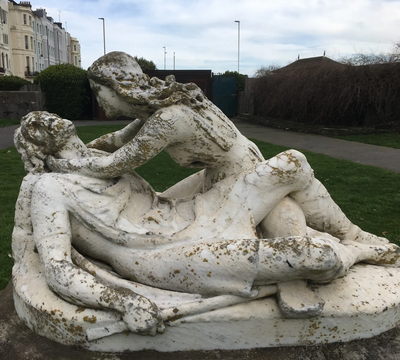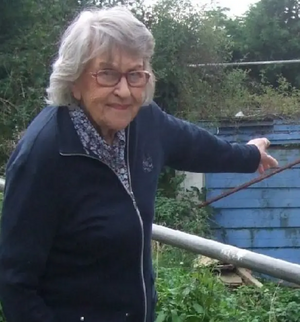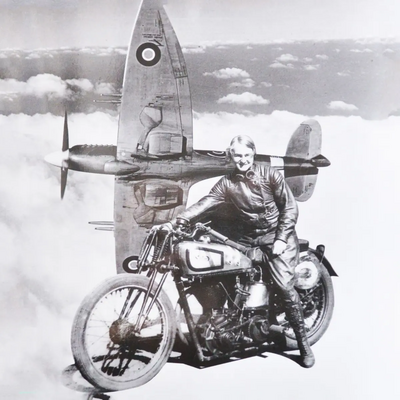International Women’s Day
We Have a Great History of Liberal Women

John Holmes the former Liberal Chief Agent once told us that HQ always thought of Hastings as "Women's World" because all the prominent members were women. On international woman's day let's remember and celebrate some famous and not so famous local, liberal minded women who have left their mark on society. You can read about them below.
A third of Lib Dem candidates that stood for election in 2018 were women. A third of Liberal Democrat MPs in parliament are women. Numbers are significantly ahead of the Conservatives although behind the Labour Party. With the right candidates, we can catch up!
We invite all women who would like to help lead the Lib Dems to success in the elections, to stand for election. You will find a supportive environment, so even if you are undecided, why not get in touch and the team will assist you.
If you are not ready to stand for election you can help support us in many ways: join from as little as £1 or get involved and help out.








EDITH SWAN NECKEdith Swan Neck or Edith the Fair was King Harold's in-hand or common-law wife for 20 years. She is best known for her grim search on the battlefield "through blood with unsandalled foot" (Heine) for parts of Harold's dismembered body - identified from "marks known only to herself". She was one of the richest landowners in England and may have founded the Priory at Walsingham. Edith's sons repeatedly rebelled unsuccessfully against the Conqueror. Her granddaughter became a Grand Duchess of Kiev. Wilkes's 1875 statue of Edith with Harold's corpse (tactfully re-assembled) ended up in the "care" of Hastings Borough. In 1953 the Council put it in Grosvenor Gardens where it has rotted ever since. There is a campaign to roof or otherwise protect the statue. Find more on Edith the Fair here. |
Annie AllnuttAnna (Annie) Allnutt (Lady Brassey) was a very successful Victorian travel writer. Her first book "A Voyage in the Sunbeam" went through more than twenty editions. It recounts an eleven month trip around the world with her family (husband and four children), crew (38 members), two dogs, three birds, and a "charming Persian kitten" (who disappeared early into the voyage). They sailed on the family's 157-foot steam-powered yacht. Between voyages, the Sunbeam was often moored at the now sadly unusable landing stage of Hastings Pier. Annie was a photographer and collector of photos - all now in the Huntington Library, California. She gathered much ethnographic material which is now part of the Hastings Museum collection. The Durbar Hall in the Museum was initially a reception room in the Brassey's London home. Annie was active nationally and locally in charitable activity and the St John's Ambulance. She and her husband Tom, Liberal MP for Hastings from 1868 to 1886, lived first in Beauport Park then Normanhurst in Catsfield. (Photo By Alexander Bassano) |
Pamela ShieldsFormer Godwin Road resident Pamela Shields was a mainstay of Hastings Liberalism in the 1960s, 70s and early 80s. Pamela was a county councillor and Liberal Leader on the Borough Council. She was an outstanding election agent and was the parliamentary candidate in 1970. She was one of the first nurses into Belsen and in her own words "that's when I knew I was a Liberal". Great leaders are trailblazers, making a path for great people to follow. Two of her colleagues were Joan Bowskill who was a borough and county councillor and the still politically active Pamela Brown (read more here). Pam Brown was the agent to Pamela Shields in 1970. Pam Brown (pictured here, taken from her article in last weeks Hastings & St Leonards Observer) is a former mayor of Hastings, Council Leader and was made an Honorary Freeman of the Borough, she also received the O.B.E. for political service. |
Dr Elizabeth BlackwellDr Elizabeth Blackwell, born 1821, was renowned in her time as a tireless campaigner for social and moral reform, women's rights, and the abolition of slavery in the US. Fighting prejudice, she became the first woman in the United States to attend medical school, and the first to become a qualified medical practitioner, both in Britain and in the United States. She practised in the American Civil War and opened a hospital in New York for women and children. She lectured on the importance of educating girls and promoted the education of women in medicine. She founded the London School of Medicine for Women. Her writings showed a strong sense of empathy and sensitivity to human suffering, as well as a strong desire for social and economic justice. She came to live in Hastings in 1880 and practised here until her death in 1910. Her name is remembered in an annual Elizabeth Blackwell medal, by her statue in the campus of Hobart and William Smith College, and a plaque on the wall of her home in Hastings Old Town. |
Isabel BlackmanIsabel Amy Blackman is probably best known for The Isabel Blackman Foundation which she set up by a trust deed dated on 22nd August 1966. The Foundation's original charitable purposes included providing financial help to the people of Hastings and district for education, Christian religion, social wellbeing, health and caring for the elderly and disabled. Her legacy continues to this day with grants of over £186,000 having been paid out during the year to April 2018. Sadly the Isabel Blackman Centre (link here) has been earmarked by the County Council Tories for closure this month. She was, of course, a Liberal, the first Woman Freeman of our Hastings Borough and very important was her legacy of St Helens Woods. She also provided finance for floral displays in the town and provided us with the Liberal Headquarters in Queens Road which were our offices and centre from 1965 to 2002. The Blackman family was a long-standing Liberal family in Hastings. Her father was Alderman Arthur Blackman C.B.E. (mayor of Hastings three times) and there will still be many people in Hastings who remember her diminutive niece Ada Blackman who was very active in the Liberal Party well into the 1980s. Blackman Avenue in St. Leonards draws its name from the family. (Photo: 27th March 1965. Miss Isabel Blackman is invited to enter the then-new Liberal H.Q. by Jeremy Thorpe. Ada Blackman standing next to Isabel looks into the camera.) |
Elsie BowermanElsie Bowerman, the first woman barrister at the Old Bailey, was a suffragette, a RMS Titanic survivor, and a biographer who campaigned to improve the status of women. There is a blue plaque on the house where she lived in Silchester Road, St Leonards on Sea. She was born in 1889 in Tunbridge Wells, Kent. Her father died when she was 5 years' old and she was sent away to school at the age of 11. She went on to Girton College, Cambridge, graduating with an MA. In 1912, aged 23, Elsie and her mother survived the sinking of the 'Titanic' and yet undeterred they went on to tour America and Canada, including British Columbia, Klondyke and Alaska, in order to see her father's relations in North America. During World War 1, she worked in Romania with a Scottish hospital service but in 1917 had to retreat to St Petersburg only to witness the start of the Russian Revolution at first hand. She and her mother were active members of Emmeline Pankhurst's Women's Social and Political Union which campaigned vigorously to gain women the vote. After the war, Elsie studied Law and was admitted to the Bar in 1924 and became the first woman barrister at the Old Bailey retiring in 1938. During World War 2, she worked for the WVS and later for the Ministry of Information before joining the BBC Overseas Service. In 1947, she went to America to help set up the United Nations Commission on the Status of Women. She returned to live near her mother in St Leonards-on-Sea before moving to Hailsham where she died in 1973 aged 84. In 2019, The Stables Theatre in Hastings Old Town is celebrating its 60 years of existence; on the sponsors' board is the name of Miss E.E. Bowerman. |
Marianne NorthMarianne North was born in Hastings in 1830, the daughter of Frederick North the Liberal MP for the town for 16 of the 38 years between 1831 and 1869. North Seat is named after Frederick. Marianne developed an interest in botanical illustration, possibly through acquaintance with Joseph Hook of Kew. Following her mother's death, she travelled worldwide with her father and, after his death, on her own, collecting and depicting botanical specimens. The accuracy of her work resulted in several species being named after her. She donated her extensive collection to Kew Gardens and funds for a building to house them. The building and collection were recently refurbished with lottery funds. The paintings are not only accurate but of considerable beauty and artistic merit. If the Jerwood Gallery has to be renamed, why not for Marianne North? |
Beatrice ShillingWhilst Beatrice Shilling, the aeronautical engineer, has no link with Hastings & Rye that we know of, she is a fine example of a high-achieving woman in science, engineering and motorcycle racing who is probably not as well-known as she should be. Beatrice believed that there wasn't any field that a woman couldn't excel in. She was born on 8th March 1909, so today on International Women's Day would have been her 110th birthday. You can read a bit about her here - Wikipedia/Beatrice Shilling and here BBC/Beatrice Shilling (Photo: Vintagenorton.com) |
Your Journey starts here...

